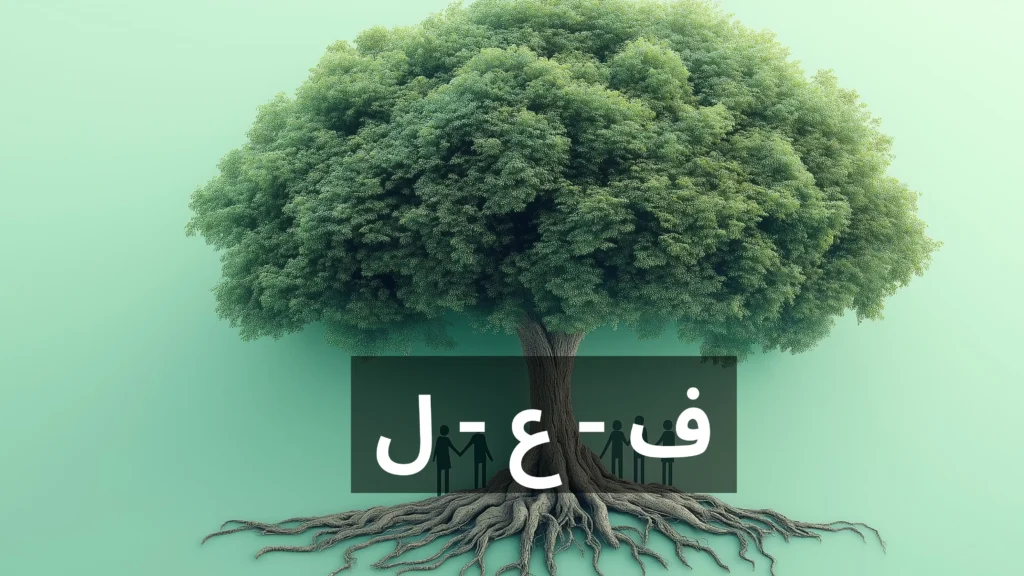Introduction: The Delight & Challenge of Arabic Vocabulary
The Arabic language, with its rich history and profound beauty, captivates countless language learners worldwide. Its poetic rhythm and deep cultural roots make learning Arabic a truly rewarding journey. However, for many, mastering Arabic vocabulary can present a unique and sometimes daunting challenge. Imagine encountering Arabic words that sound strikingly similar, perhaps differing by j=ust one letter, yet carry entirely different meanings. This linguistic subtlety, while a testament to Arabic’s richness, is often a source of confusion for students.
What if this common hurdle could be transformed into a powerful Arabic study tip? By proactively recognizing and mastering these “look-alike, sound-alike” words together, you can significantly enhance your Arabic vocabulary and sidestep many common Arabic mistakes. This article will guide you through this fascinating aspect of Arabic language learning and equip you with a practical strategy to conquer it.
The Phenomenon: A Single Letter, A World of Difference
Arabic linguistics reveals a fascinating characteristic: the language is rich with Arabic words where a slight alteration—sometimes just the addition or change of a single letter—completely shifts the meaning. This isn’t about simply attaching a common prefix or a preposition like ‘بـ’ (bi-), which typically means ‘by’ or ‘with.’ Instead, the added letter becomes an intrinsic part of the word’s fundamental structure, woven into its very root and essence. This dramatic alteration creates an entirely new word with a distinct meaning.
Take, for instance, the transformative power of the letter ‘ب’ (B) when added at the beginning. It’s a prime example of how one small addition can forge a brand new Arabic word from an existing one:
- طاقة (Taaqa – energy) ➡️ بطاقة (biṭaaqa – card)
- From the abstract concept of ‘energy’ to a tangible ‘card’, the addition of ‘ب’ creates a whole new object, demonstrating a profound shift in Arabic vocabulary.
- آب (ʾaab – August) ➡️ باب (baab – door)
- A month of the year becomes an everyday ‘door’ – a striking change orchestrated by one letter, showcasing the dynamic nature of Arabic words.
- عيد (ʿeed – holiday) ➡️ بعيد (baʿeed – far)
- A festive ‘holiday’ turns into a measure of ‘distance’. This shows how ‘ب’ can shift a noun into an adjective or concept.
These examples are just a glimpse. Other single-letter changes or minor phonetic shifts can be equally impactful, highlighting the depth and complexity of Arabic linguistics. For those who want to learn Arabic effectively, understanding this subtle yet powerful distinction is crucial for mastering Arabic vocabulary beyond basic rules.
Why Conventional Learning Falls Short (and what to do about it!)
While the beauty of these transformations is undeniable, they also present a significant challenge for Arabic learners. Traditional approaches to Arabic language learning often introduce Arabic vocabulary in isolation. You might learn “طاقة” (Taaqa – energy) one day and “بطاقة” (biTaaqa – card) weeks later, making it difficult to spot the connection, or more critically, the potential for confusion. This fragmented method can inadvertently lead to common Arabic mistakes as similar-sounding words get mixed up in a learner’s mind.
The reality is, dedicated textbooks or specialized courses focusing solely on these ‘similar-sounding Arabic words’ are rare. Such distinctions are often discovered by chance during reading or listening, leaving learners to piece together the puzzle on their own. This is where you, as a proactive Arabic learner, can gain a significant advantage. Instead of waiting for these confusing pairs to emerge by accident, a targeted and personalized approach can turn a potential pitfall into a powerful tool for effective Arabic learning. It’s about taking control of your Arabic study tips and building a more resilient Arabic vocabulary.
Your Secret Weapon: The “Comparison Notebook” Strategy

To effectively memorize Arabic words and prevent mixing up these deceptively similar pairs, we highly recommend a simple yet powerful Arabic study tip: create a dedicated ‘Comparison Notebook’. This isn’t just another vocabulary list; it’s a personalized linguistic map designed to highlight and conquer challenging distinctions in Arabic language learning.
How to implement this effective Arabic learning strategy:
- Side-by-Side Entries: Whenever you encounter two or more Arabic words that look or sound similar but have vastly different meanings (like ‘طاقة’ and ‘بطاقة’,) ‘شر’ and ‘بشر’), jot them down side-by-side in your notebook. Don’t just list them; contrast them.
- Comprehensive Details: For each word, include its Arabic script, clear transliteration (like DHaaʼiʿ for ضائع), precise English meaning, and perhaps a short, illustrative example sentence to show it in context.
- Focus on the Differentiating Factor: Crucially, pay attention to the specific letter or feature that makes them different. Underline it, highlight it, or make a note about the subtle Arabic pronunciation change. This dedicated approach helps your brain process them as distinct pairs or groups, rather than confusing individual entries.
The benefits of this ‘Comparison Notebook’ are immense: This method not only sharpens your Arabic pronunciation and spelling but also profoundly solidifies your Arabic vocabulary. It turns potential pitfalls into stepping stones for advanced Arabic vocabulary mastery and understanding of Arabic roots. By actively engaging with these nuances, you’re not just expanding your word bank; you’re building a deeper, more accurate grasp of the Arabic language, making your journey to learn Arabic truly rewarding.
Conclusion: Master Arabic, One Nuance at a Time
Mastering Arabic vocabulary isn’t just about sheer memorization; it’s about understanding its nuances and employing smart Arabic study tips. By actively comparing and contrasting similar Arabic words, you’re not just learning words—you’re truly understanding the Arabic language itself. Embrace this challenge, equip yourself with your ‘Comparison Notebook,’ and watch your Arabic for intermediate learners skills soar!
Looking to expand your Arabic vocabulary even further? Dive into our comprehensive Arabic Vocabulary Book, featuring over 1600 essential Arabic words expertly categorized by topic to streamline your memorization process. Stop struggling with scattered word lists and start building your Arabic roots with a structured, effective approach. It’s the perfect companion for anyone serious about learning Arabic effectively!
Want to see these transformations in action? Check out our latest Instagram post for a visual example of the letter بــ changes everything!



